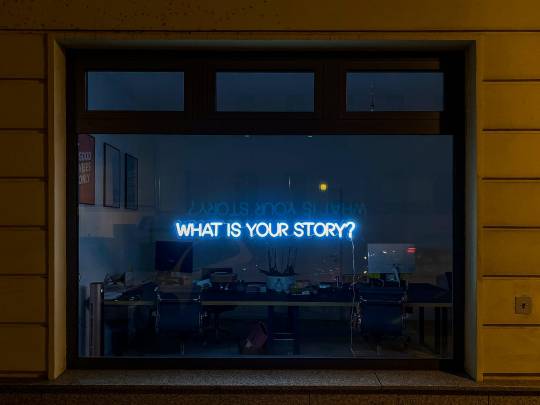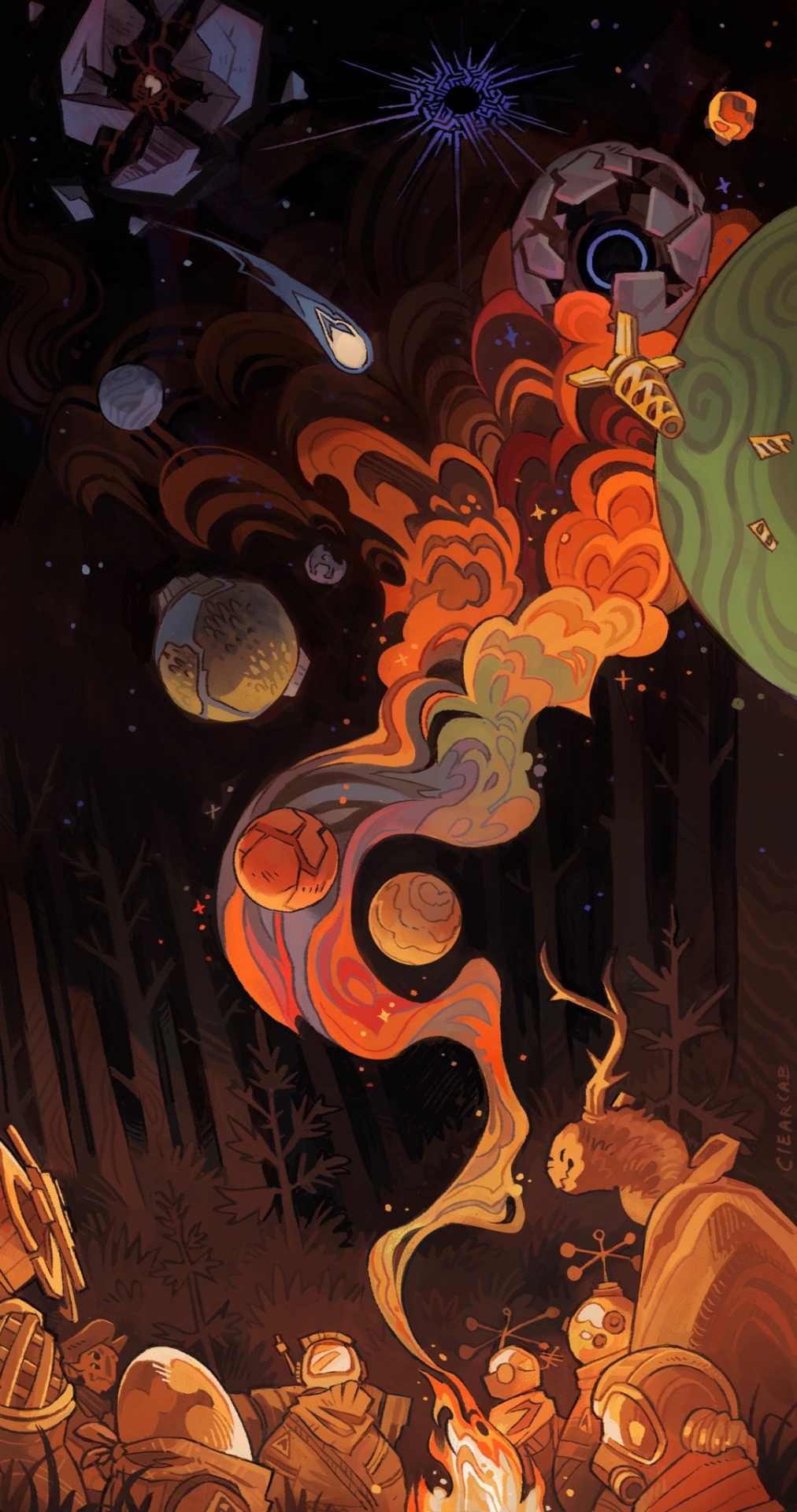#advice show
Explore tagged Tumblr posts
Text
Do you like answering questions about yourself? Do you like to come up with excellent bits? Do you love a Google form?
If you said yes to all of these questions, I invite you to answer some questions on a Google form!
'Please Please Please' is a radio show about giving stupid advice. Our show, to be exact. You might recognize the format. But it's different, because we're just 2 guys. And we don't stand to make any money. We like to joke about problems, but we only know so many people. So if you have problems, send them in, and tune in if you're so inclined on Tuesday's at 4pm PST to hear us goof on them at radioemily.ca
Or just send them in for fun. Regardless, we love questions. If you also love questions, here's our question form.
#its not like the brothers guys#we're different#it super is#podcast#radio#its radio but nobody does like radio anymore#queer#lgbtq#mbmbam#radio show#trans#comedy podcast#advice show
6 notes
·
View notes
Text
How to show emotions
Part V
How to show grief
a vacant look
slack facial expressions
shaky hands
trembling lips
swallowing
struggling to breathe
tears rolling down their cheeks
How to show fondness
smiling with their mouth and their eyes
softening their features
cannot keep their eyes off of the object of their fondness
sometimes pouting the lips a bit
reaching out, wanting to touch them
How to show envy
narrowing their eyes
rolling their eyes
raising their eyebrows
grinding their teeth
tightening jaw
chin poking out
pouting their lips
forced smiling
crossing arms
shifting their gaze
clenching their fists
tensing their muscles
then becoming restless/fidgeting
swallowing hard
stiffening
holding their breath
blinking rapidly
exhaling sharply
How to show regret
scrubbing a hand over the face
sighing heavily
downturned mouth
slightly bending over
shoulders hanging low
hands falling to the sides
a pained expression
heavy eyes
staring down at their feet
Part I + Part II + Part III + Part IV + Part VI
If you like my blog and want to support me, you can buy me a coffee or become a member! And check out my Instagram! 🥰
#writeblr#writing prompts#how to show emotions#show not tell#creative writing#writing help#writers on tumblr#how to write#writing advice#writing tips
30K notes
·
View notes
Text
Don’t miss out on your life while you’re trying to get it together. Take some chances.
k.b. // dynasty - netflix
#k.b.#dynasty#Netflix#dynasty quotes#dynasty netflix#tv show#tv show quotes#writers on tumblr#quotes#poets on tumblr#love#love quotes#quote#words#love quote#cute#poets#poetry#poem#life quotes#life#life lesson quotes#life advice#writers#writing#text#deep#deep quotes#deep thoughts
4K notes
·
View notes
Text

The girls are back (from the grave)
[First] Prev <–-> Next
#poorly drawn mdzs#mdzs#wei wuxian#lan wangji#Not sure there is a tag for the ghost girls...The Yiling sorority sisters. The girly greek chorus. You'll always be in our hearts.#I love how this scene echoes back to yi city (sizhui asking if it's time to play inquiry but WWX goes with empathy)#it shows how deeply enmeshed he is with spirits! He calls and they respond. They are familiar - if not old friends.#I am such a sucker for necromancer characters (it's how this series got my interest in the first place)#So I'm always thrilled when WWX gets to play the part! Let him be more comfortable with the dead than the living!#He's the guy who calls upon bloody mary in the bathroom mirror just to ask a quick history question or advice on his outfit.#He wanders into the graveyard and shouts for the girls and the girls shout back.#Grave yard? More like a RAVE yard! Let's go girls!
3K notes
·
View notes
Text
“Show, Don’t Tell”…But This Time Someone Explains It

If you’ve ever been on the hunt for writing advice, you've definitely seen the phrase “Show, Don’t Tell.”
Writeblr coughs up these three words on the daily; it’s often considered the “Golden Rule” of writing. However, many posts don't provide an in-depth explanation about what this "Golden Rule" means (This is most likely to save time, and under the assumption that viewers are already informed).
More dangerously, some posts fail to explain that “Show, Don’t Tell” occasionally doesn’t apply in certain contexts, toeing a dangerous line by issuing a blanket statement to every writing situation.
The thing to take away from this is: “Show, Don’t Tell” is an essential tool for more immersive writing, but don't feel like a bad writer if you can’t make it work in every scenario (or if you can’t get the hang of it!)
1. What Does "Show, Don't Tell" Even Mean?

“Show, Don’t Tell” is a writing technique in which the narrative or a character’s feelings are related through sensory details rather than exposition. Instead of telling the reader what is happening, the reader infers what is happening due to the clues they’ve been shown.
EXAMPLE 1:
Telling: The room was very cold. Showing: She shivered as she stepped into the room, her breath steaming in the air.
EXAMPLE 2:
Telling: He was furious. Showing: He grabbed the nearest book and hurled it against the wall, his teeth bared and his eyes blazing.
EXAMPLE 3 ("SHOW, DON'T TELL" DOESN'T HAVE TO MEAN "WRITE A LOT MORE")
Telling: The room hadn't been lived in for a very long time. Showing: She shoved the door open with a spray of dust.
Although the “showing” sentences don’t explicitly state how the characters felt, you as the reader use context clues to form an interpretation; it provides information in an indirect way, rather than a direct one.
Because of this, “Show, Don’t Tell” is an incredibly immersive way to write; readers formulate conclusions alongside the characters, as if they were experiencing the story for themselves instead of spectating.
As you have probably guessed, “showing” can require a lot more words (as well as patience and effort). It’s a skill that has to be practiced and improved, so don’t feel discouraged if you have trouble getting it on the first try!
2. How Do I Use “Show, Don’t Tell” ?

There are no foolproof parameters about where you “show” and not “tell" or vice versa; it’s more of a writing habit that you develop rather than something that you selectively decide to employ.
In actuality, most stories are a blend of both showing and telling, and more experienced writers instinctively switch between one and another to cater to their narrative needs. You need to find a good balance of both in order to create a narrative that is both immersive and engaging.
i. Help When Your Writing Feels Bare-Bones/Soulless/Boring
Your writing is just not what you’ve pictured in your head, no matter how much you do it over. Conversations are stilted. The characters are flat. The sentences don’t flow as well as they do in the books you've read. What’s missing?
It’s possibly because you’ve been “telling” your audience everything and not “showing”! If a reader's mind is not exercised (i.e. they're being "spoon-fed" all of the details), your writing may feel boring or uninspired!
Instead of saying that a room was old and dingy, maybe describe the peeling wallpaper. The cobwebs in the corners. The smell of dust and old mothballs. Write down what you see in your mind's eye, and allow your audience to formulate their own interpretations from that. (Scroll for a more in-depth explanation on HOW to develop this skill!)
ii. Add More Depth and Emotion to Your Scenes
Because "Show, Don't Tell" is a more immersive way of writing, a reader is going to feel the narrative beats of your story a lot more deeply when this rule is utilized.
Describing how a character has fallen to their knees sobbing and tearing our their hair is going to strike a reader's heart more than saying: "They were devastated."
Describing blood trickling through a character's fingers and staining their clothes will seem more dire than saying: "They were gravely wounded."
iii. Understand that Sometimes Telling Can Fit Your Story Better
Telling can be a great way to show your characters' personalities, especially when it comes to first-person or narrator-driven stories. Below, I've listed a few examples; however, this list isn't exclusive or comprehensive!
Initial Impressions and Character Opinions
If a character describes someone's outfit as "gaudy" or a room as "absolutely disgusting," it can pack more of a punch about their initial impression, rather than describing the way that they react (and can save you some words!). In addition, it can provide some interesting juxtaposition (i.e. when a character describes a dog as "hideous" despite telling their friend it looks cute).
2. Tone and Reader Opinions
Piggybacking off of the first point, you can "tell, not show" when you want to be certain about how a reader is supposed to feel about something. "Showing" revolves around readers drawing their own conclusions, so if you want to make sure that every reader draws the same conclusion, "telling" can be more useful! For example, if you describe a character's outfit as being a turquoise jacket with zebra-patterned pants, some readers may be like "Ok yeah a 2010 Justice-core girlie is slaying!" But if you want the outfit to come across as badly arranged, using a "telling" word like "ridiculous" or "gaudy" can help set the stage.
3. Pacing
"Show, don't tell" can often take more words; after all, describing a character's reaction is more complicated than stating how they're feeling. If your story calls for readers to be focused more on the action than the details, such as a fight or chase scene, sometimes "telling" can serve you better than "showing." A lot of writers have dedicated themselves to the rule "tell action, show emotion," but don't feel like you have to restrict yourself to one or the other.
iv. ABOVE ALL ELSE: Getting Words on the Page is More Important!
If you’re stuck on a section of your story and just can’t find it in yourself to write poetic, flowing prose, getting words on the paper is more important than writing something that’s “good.” If you want to be able to come back and fix it later, put your writing in brackets that you can Ctrl + F later.
Keeping your momentum is the hardest part of writing. Don't sacrifice your inspiration in favor of following rules!
3. How Can I Get Better at “Show, Don’t Tell”?

i. Use the Five Senses, and Immerse Yourself!
Imagine you’re the protagonist, standing in the scene that you have just created. Think of the setting. What are things about the space that you’d notice, if you were the one in your character’s shoes?
Smell? Hear? See? Touch? Taste?
Sight and sound are the senses that writers most often use, but don’t discount the importance of smell and taste! Smell is the most evocative sense, triggering memories and emotions the moment someone walks into the room and has registered what is going on inside—don’t take it for granted. And even if your character isn’t eating, there are some things that can be “tasted” in the air.
EXAMPLE:
TELLING: She walked into the room and felt disgusted. It smelled, and it was dirty and slightly creepy. She wished she could leave. SHOWING: She shuffled into the room, wrinkling her nose as she stepped over a suspicious stain on the carpet. The blankets on the bed were moth-bitten and yellowed, and the flowery wallpaper had peeled in places to reveal a layer of blood-red paint beneath…like torn cuticles. The stench of cigarettes and mildew permeated the air. “How long are we staying here again?” she asked, flinching as the door squealed shut.
The “showing” excerpt gives more of an idea about how the room looks, and how the protagonist perceives it. However, something briefer may be more suited for writers who are not looking to break the momentum in their story. (I.e. if the character was CHASED into this room and doesn’t have time to take in the details.)
ii. Study Movies and TV Shows: Think like a Storyteller, Not Just a Writer
Movies and TV shows quite literally HAVE TO "show, and not tell." This is because there is often no inner monologue or narrator telling the viewers what's happening. As a filmmaker, you need to use your limited time wisely, and make sure that the audience is engaged.
Think about how boring it would be if a movie consisted solely of a character monologuing about what they think and feel, rather than having the actor ACT what they feel.
(Tangent, but there’s also been controversy that this exposition/“telling” mindset in current screenwriting marks a downfall of media literacy. Examples include the new Percy Jackson and Avatar: The Last Airbender remakes that have been criticized for info-dumping dialogue instead of “showing.”)
If you find it easy to envision things in your head, imagine how your scene would look in a movie. What is the lighting like? What are the subtle expressions flitting across the actors' faces, letting you know just how they're feeling? Is there any droning background noise that sets the tone-- like traffic outside, rain, or an air conditioner?
How do the actors convey things that can't be experienced through a screen, like smell and taste?
Write exactly what you see in your mind's eye, instead of explaining it with a degree of separation to your readers.
iii. Listen to Music
I find that because music evokes emotion, it helps you write with more passion—feelings instead of facts! It’s also slightly distracting, so if you’re writing while caught up in the music, it might free you from the rigid boundaries you’ve put in place for yourself.
Here’s a link to my master list of instrumental writing playlists!
iv. Practice, Practice, Practice! And Take Inspiration from Others!
“Show Don’t Tell” is the core of an immersive scene, and requires tons of writing skills cultivated through repeated exposure. Like I said before, more experienced writers instinctively switch between showing and telling as they write— but it’s a muscle that needs to be constantly exercised!
If I haven’t written in a while and need to get back into the flow of things, I take a look at a writing prompt, and try cultivating a scene that is as immersive as possible! Working on your “Show, Don’t Tell” skills by practicing writing short, fun one-shots can be much less restrictive than a lengthier work.
In addition, get some inspiration and study from reading the works of others, whether it be a fanfiction or published novel!
If you need some extra help, feel free to check out my Master List of Writing Tips and Advice, which features links to all of my best posts, each of them categorized !
Hope this helped, and happy writing!
3K notes
·
View notes
Text

he could not control the class 😔
#tossing my hat into the trend ring#a little sumn in between pieces#got possessed by the silly for a moment#we love an unhealthy codependent sibling relationship#join me on my delusion of every behavior or habit Ludwig has has been ingrained and propagated into him at early childhood by Gilbert#I imagine Ludwig going thru one of his many social interaction debacles and thinking ‘quick Ludwig - what would brother do?!’#and Gil shows up in his head like the laissez faire voice of authority like#burn their fields and salt their crops 👍 [fades away]#do you understand me?#kinda like when mob thinks of Reigen during social anxieties but he comes up with the most useless advice in his head#Gil’s little puppy <3#hetalia#hetalia fanart#hws germany#hws prussia#aph germany#aph prussia#german bros#digital art#my art#drawing meme#Ludwig waiting for his daily chin scratch for being an agreeable young lad 🥺#on second thought maybe I should’ve done this in more historical clothing#like young Lud being put in charge of his first meeting as like training and doing horribly 😭#general Gil is not satisfied with his performance#do you guys think Gil is a boy mom#discuss
2K notes
·
View notes
Text




I love these ominous snake people
#me googling how to get job at wildbrain at 4am!!!#s5 was so good man#really love this show#thinking abt animation got me going nuts#if anyone has advice on how to get art internships...#please let me know!!#i would love to do storyboard or design work for experience#monkie kid got me feelin straight up inspired 🔥#mk#qi xiaotian#lmk mk#lmk nuwa#nuwa#lmk s5 spoilers#lmk season 5 spoilers#monkie kid spoilers#lego#monkie kid#lmk#lego monkie kid#xiangliu#love this dude
2K notes
·
View notes
Text

saw some mangy dog on the outskirts of town
#my art#oc#els#werewolf#furry#anthro#illustration#you would not believe the hassle this gave me lmao....i want to do more with it but i have to wipe my hands of it#idk if this looks good but it has to be finished i have to be finished with it#WORD OF ADVICE that allows a small glimpse into the horrible time i've had: PLAN YOUR COMPOSITIONS#GOD. initial drawing of els: 1-2 hours at most. trying to find a composition that doesn't suck: 100000 hours and ongoing#i think my problem is this els looks better zoomed in but finding a way to keep it zoomed in....mission impossible#i love this els face though. i will admit. i had to persevere to get SOMETHING that at least vaguely worked so i could show off this els#okay. okay. anyway it's greengage season again. big ups to greengages for making life just that much brighter#also the owls are goin crazyyy outside my window rn they are speaking and i am listening. in a delirium
1K notes
·
View notes
Text
one thing about the 118 is that even when bobby is gone they are going to pull up to his house one by one and trauma dump their life updates on him
#i think i’ve seen this film before#(aka bobby’s s2 suspension arc)#that’s their captain dad! ofc they still need his advice!#it was just cute seeing this parallel lol#bobby nash#captain bobby nash#118 firefam#911 firefam#911 spoilers#9-1-1#911#911 show#911 abc#911 season 8#em saying things
985 notes
·
View notes
Text

something i got carried away with last weekend, i love this wonderful little game so much
#outer wilds spoilers#outer wilds#illustration#ciear’s scribbles#kinda iffy about some bits but eh i think it’s doing a good job showing how much i love this game#forever refusing to actually figure out everyone’s placement in the campfire circle they just go wherever i think they should#word of advice do not try and fit eight entire characters into a very narrow space#btw! prints available on my INPRNT for those interested :)
12K notes
·
View notes
Video
youtube
#RELATIONSHIP #ADVICE #DATING #ADVICE REAL TIME Q&A | $10 Superchat or $Cashapp and get your question answered LIVE on the air in real time. Suggest preparing your question in advance so you can cut and paste, or click link to log onto the platform and ask your question with a voice call. Show starts at 6pm PST/9pmEST on Friday 1/20/23
#youtube#advice show#dating advice#relationships#relationship advice#relationship coach#dating coach#advice for women#dysfunctional#break up#take a break#abusive relationships#confused
0 notes
Text
Showing vs. Telling
You’ve heard it a million times, “show, don’t tell.” But that doesn’t mean describing every single detail like you’re painting a picture. Showing means giving your readers the space to feel the moment. Instead of saying a character is scared, show their hands shaking, their breath catching in their throat. Instead of saying it’s cold, describe the way the air bites at their skin. Let the reader experience it for themselves. But don’t be afraid to tell when you need to. Sometimes a quick, clear statement is what moves the story forward. It’s about balance. Show them what matters, and tell them what they need to know.
#show don't tell#writing#writer on tumblr#writerscommunity#writing tips#character development#writing advice#oc character#writing help#writer tumblr#writblr#writer community
692 notes
·
View notes
Note
It would be nice to hear from Wanda and Cosmo! It is kind of nice that you guys have two children like your own family does. Are you two still close to your siblings? Wanda has a sibling and Cosmo also have a sibling just like Timmy and Peri. Do they share some sibling stories to your children?


Wanda and Cosmo both reconnected with their siblings shortly after having Peri. Or, well. More like Blonda reentered their lives once she realized she had a baby nephew. Eventually, they slowly patched things up the more Blonda came to visit Peri.
Schnozmo was dragged back kicking and screaming. Mama Cosma refuses to have her sons live estranged lives now that she has a grandchild in the picture. Schnozmo doesn't know how to handle children, but he's doing his best.
Peri likes Schnozmo because he makes silly noises and funny stories. But he prefers Blonda's theatrics much more and loves playing Dress Up with her.
Bitties Series: [Start] > [Previous] > [Next]
#fairly oddparents#fop#fop a new wish#fop cosmo#fop wanda#fop peri#fop blonda#fop schnozmo#cosmo#wanda#peri#blonda#schnozmo#asks#avarus of the west#itty bitties fop au#ive decided that worms on strings are real fairy creatures and theyre used like fox coats in fairy world. lots of implications for this.#you know how kids seem to flock towards the least capable adult for some reason and cling onto them despite the adult trying to avoid them?#peri and schnozmo <3#schnozmo taught peri how to give a convincing lie and how to be charismatic enough to avoid trouble#peri and blonda are like 2 peas in a pod!#peri's very receptive to her dramatic flairs and eccentrics. blonda loves spending lots of her money into getting him elaborate outfits#blonda helped peri with his opening lines for when he met his first godchild. she refined schnozmo's charisma in Peri#MEANWHILE ON TIMMYS END#timmy already has opinions about blonda and schnozmo#theyre neither good nor bad but he cares not for drama and doesn't like that schnozmo's a chronic liar#but he does like that he has caring relatives now! they show up to his celebrations and gives him thoughtful gifts and advice. its nice.#timmy has never told peri about schnozmo's past as a conartist. he knows that schnozmo's doing his best to fix himself for the better#so hes not going to ruin that by telling peri and others about his past
520 notes
·
View notes
Text

I feel bad for neglecting Hazel so much, I do have many thoughts about her.. and also a mermaid au that im probably not going to do anything with
#fop#fairly oddparents#fop a new wish#fairly oddparents a new wish#hazel wells#fop hazel#fop dev#dev dimmadome#art#digital art#doodles#I wish Hazels parents were more flawed tbh...#Like I get why they wanted to have them be good rep so that young people could know what a good family is supposed to look like#but it felt like every time there was an opportunity to have them do something genuinely flawed-#they would perfectly sidestep it before it even became a problem#I really enjoyed the first episode because it showed a hint of a very unique emotional issue Hazel had related to having a therapist mother#The idea that she has to be mature all the time#constantly living around therapy speak makes her feel like she isnt allowed room to breathe#Feeling unable to express her emotions without someone there giving advice that she isnt ready for yet#just small things!#She feels so pressured to be emotionally mature all the time BECAUSE she gets praised for it#maybe im projecting everyone always tell me I was so mature for my age...#But like I really really wanted to see that from her!!#And then after that episode it doesnt even come up again#The only other episode that features the moms job as a conflict is the one where she wants to spend more time with her#which is a fine conflict I guess but it still ends with her saying all the perfect things#I wanted Markus to be more of a genuine threat too. even if he didnt actually do anything having him be more looming would have been nice#I feel like they mostly forget hes a para scientist most of the time idk.#I just felt like his interactions could have been more unique#Maybe he will be in future seasons idk
597 notes
·
View notes
Text
Show Don't Tell - Symptoms vs. the Affliction
Another way to think of show don’t tell is to describe the symptoms rather than tell the affliction. You could say someone was close to fainting—or you could describe their symptoms and trust the readers to understand what they mean: the world swirled around her head, her ears beginning to hum lowly, then louder, increasing into a high-pitched ring. She took a deep breath, her stomach turning over itself. Etc.
Symptoms can also mean the lump in your throat as a “symptom” of being sad enough to cry, or the warmth of your face as a “symptom” of embarrassment.
That might sound a bit silly, but I find it really helpful when I’m reading over mine or others work and looking for those places where showing would be better than telling. Have you described the symptoms, or just told the affliction?
Here’s a short list of “afflictions” and their associated “symptoms” to get you started (but make sure to explore how different characters express different afflictions, even in more odd or unusual ways!)

Any symptoms I missed?
#writing#creative writing#writing community#screenwriting#writers#writing inspiration#books#filmmaking#writing advice#film#show don't tell#show don't tell advice#symptoms vs afflictions#show don't tell - symptoms vs the affliction#writing emotion#writing pain
981 notes
·
View notes
Text

CRITIQUE WANTED!!! i'm designing dungeons and daddies season 3 as an animated show and i'd love to hear some thoughts on my first draft of these designs before i continue!
#dungeons and daddies#dndads#dndads s3#the peachyville horror#tony collette#francis farnsworth#trudy trout#kelsey grammar#you don't have to be familiar with the show to give advice!! anything is appreciated :)#hoping to catch some fans though cuz everyone i've showed this to so far hasn't been familiar with it
391 notes
·
View notes